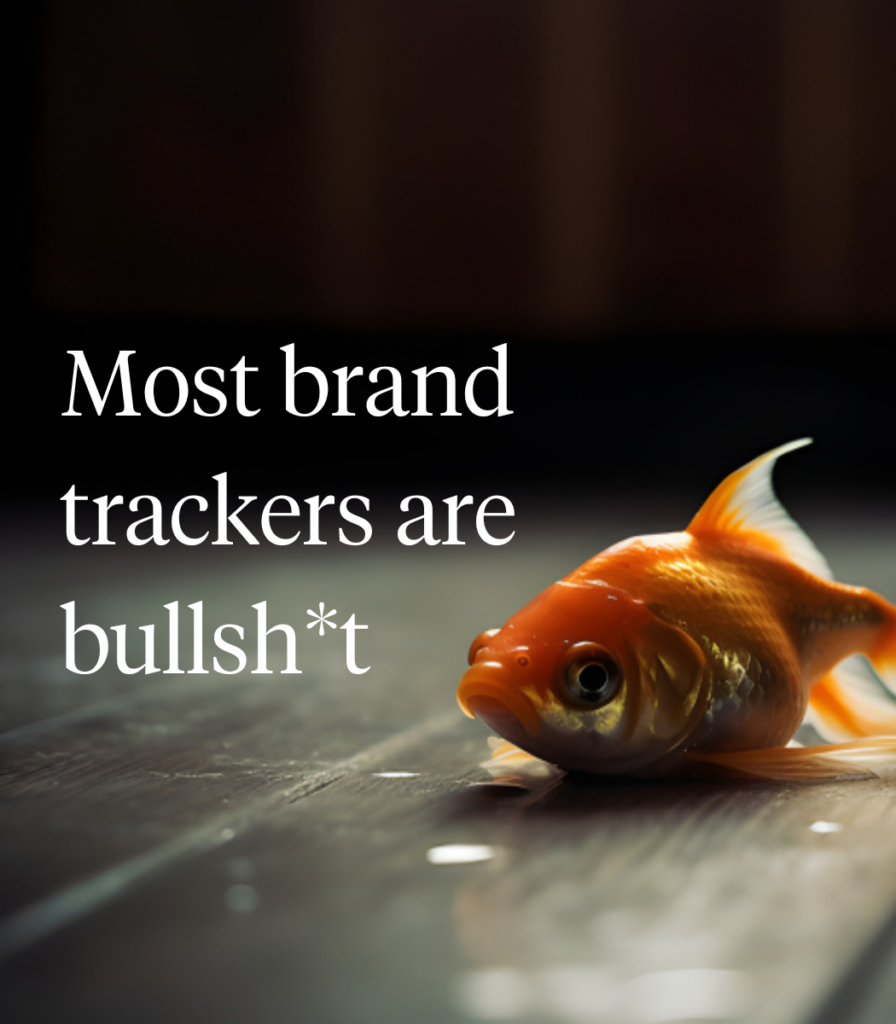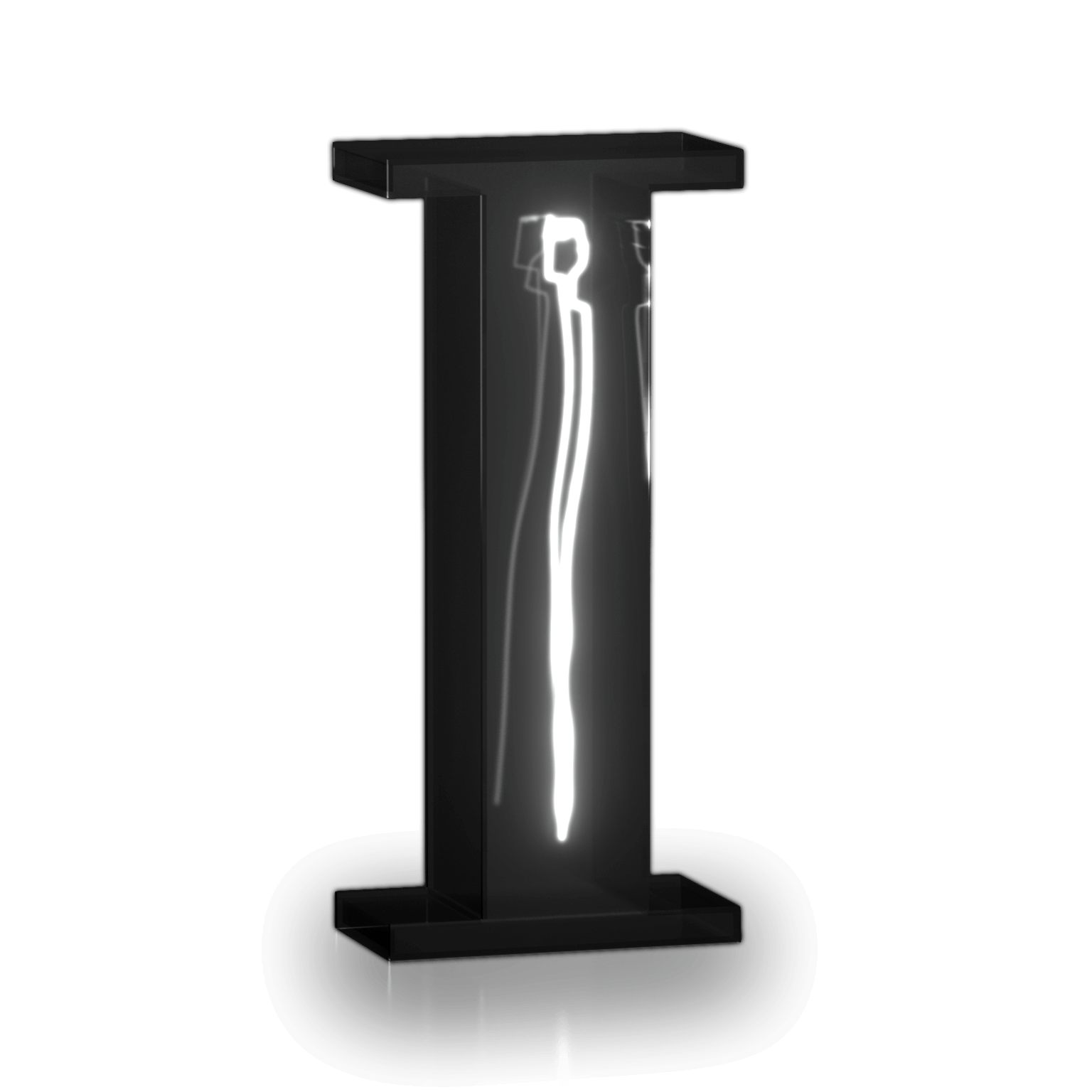您的品牌跟踪研究失败了--原因如下
Or at least, it should be.
But too many brand tracking systems are stuck in the past, delivering outdated, irrelevant metrics with no real guidance. And that’s not just a waste of time—it’s a waste of money.
The worst part? You might not even realize it’s happening.

The cost of bad brand tracking
Too many brand trackers deliver the same stale metrics, month after month. You receive a glimpse of what’s happened, but not why, and definitely not what to do next.
Without the right insights, tracking becomes a costly exercise in reporting, not decision making.
Here’s how it’s holding you back:
-
Misguided strategy: Without a real-time, predictive view of your brand’s position in the market, and the reasons behind it, you’re left making decisions in the dark.
-
Wasted spend: Without clear guidance on what’s working (and what’s not working), you risk pouring budgets into campaigns that aren’t doing what you need them to do.
-
Lost market share: A lack of actionable insight makes it harder to adapt, giving competitors an edge while you miss revenue targets.
If any of this sounds familiar, it’s time to rethink how you track your brand. Here are the five biggest warning signs that your tracking is costing you real revenue (and here’s the guide to fix it!).

1. Outdated tracker = outdated strategy
The problem:
Slow insights don’t just delay decisions—they come with a cost.
While competitors are spotting shifts in real-time, you’re stuck looking backward, making decisions based on what happened last month, not what’s shaping your bottom line today.
By reacting too late, you’re handing revenue to faster-moving competitors.
How to fix it:
Modern brand tracking should be always-on and predictive, offering up-to-the-minute insights that help you move swiftly when a new trend goes viral, or a gap appears in the market.
It’s about catching shifts as they happen, so you can adjust strategy proactively, not reactively. With real-time data and predictive analytics, you’ll identify risks and seize opportunities before they hit your bottom line.
Modern tracking doesn’t just show you what happened—it tells you what’s coming next, allowing you to outmaneuver the competition.
2. Your metrics look good—but revenue says otherwise
The problem:
“Great news about our brand sentiment! Just a shame about the revenue targets. Oh well!” – Said no one. Ever.
The thing is, traditional brand trackers often focus on surface-level metrics that look great on paper, but don’t show if they’re actually driving business growth.
This isn’t what keeps you up at night.
So, if your tracker isn’t joining the dots and measuring tangible outcomes like market share or sales, you’re chasing vanity metrics that don’t matter when it comes to your bottom line.
How to fix it:
Modern brand tracking shouldn’t just create reports—it should drive revenue.
It’s about connecting brand perception directly to financial outcomes. If your tracker doesn’t tie awareness, favorability, and sentiment to actual sales or market share, it’s wasting your budget.
By aligning your metrics with real business results, you’ll immediately see if your marketing spend is delivering growth or falling short.
3. You’re tracking the what, not the why
The problem:
Most brand trackers will happily tell you your brand awareness, sentiment, or any perception shifts. But too often, they can only show you the movement, without explaining what’s driving it.
You might see where consumers are in the funnel, but you’ll be left guessing why they’re stuck, or what will actually move them to purchase.
Without understanding the drivers behind the numbers, you’re missing opportunities to grow.
How to fix it:
Your tracker should go beyond basic measurement and tell you why consumer preferences are changing. It should connect shifts to actual consumer behavior and provide clear, customized insights that directly inform your strategy.
Most trackers weren’t designed to provide this level of insight, but with the ACTS framework—Accountable, Customized, Timely, and Strategic tracking—you can get a fuller, actionable picture of what influences consumer choices and drives the market forward.
This is exactly why leading brands are moving to ACTS tracking. If you’re still relying on outdated metrics, read this guide now.
4. Your tracker still thinks your biggest threats are legacy competitors
The problem:
The market is constantly evolving, and the biggest threat to your brand isn’t the competitor you’ve been tracking for years—it’s shifting consumer expectations. These trends can alter how your brand is perceived overnight.
But too many trackers still rely on one-size-fits-all metrics that weren’t designed for your brand, your industry, or the modern market. These outdated systems buckle under the pressure of how complex the market is today, leaving you blind to the changes that matter most.
How to fix it:
Your tracker should be able to identify and react to market shifts as they happen. It needs to evolve with consumer behavior, tracking emerging conversations, new trends and disruptors long before they become serious threats.
It should offer tailored insights that go beyond generic numbers, reflecting the specific realities of your category and your brand’s unique position within it.
A tracker that evolves with the market ensures you’re always one step ahead.
5. You’re paying for reports, not decisions
The problem:
Your team is getting long, data-heavy reports every quarter. But the question is: are they actually changing anything?
Too many trackers focus on delivering numbers without providing actionable insights. Data without direction is just noise. If your tracker isn’t guiding your next steps, it’s not driving the impact you need.
How to fix it:
If your tracker isn’t shaping real decisions, it’s not doing its job. It needs to act as a decision engine, steering key areas like pricing, creative, media, and innovation.
You deserve clear actionable insights from your tracker that guide the decisions that move your business forward.
Get out of the brand tracking trap
The brands winning today aren’t using the same tracking systems they were two years ago. If yours still looks the same, it’s time to rethink your approach.
Read our latest report, The Brand Tracking Trap now.









